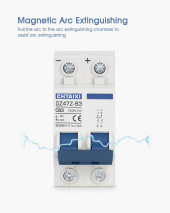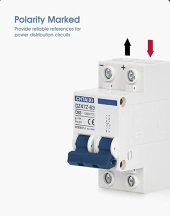Conventional wisdom in the Electrical field is that supply voltage always comes in at the top of a breaker/service disconnect/switch, the load is connected to the bottom terminals. One of the main reasons is safety. I'm sure most have you have seen a service disconnect....even a small one like the ones that might be on an Air Conditioner outdoor unit. When you pull the switch handle down to disconnect it, many/most of the time you can see the blades that go into the stabs at the top of the switch. If the line side of the power came into the bottom of that switch, when you opened the switch/disconnect, the blades would be exposed and someone could accidentally touch the blades and get electrocuted. The top part of the switch that the blades go into, are usually protected with some sort of arc chute or insulated material and keep you fingers, hands, etc away from the live voltage. This has been a practice for as long as I can remember, and I started my apprenticeship in early 1977. I'm sure it proceeded me, so suffice to say, that practice has been around for quite a while.





